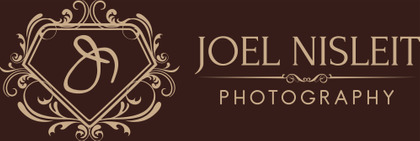“What lenses do I need?” and specifically “How should I upgrade from my kit lenses” are two of the questions I get most. The answers are slightly different for each question, so this article will focus on general lens needs.
There’s a “trinity” of lenses that form the core of most working photographers’ systems. With this core, you can do almost any assignment and any photograph you want with great quality. Outside of the core, there are many specialty lenses you could get for a variety of less common uses, from macro to super-telephoto.
What is the trinity of lenses?
Generally speaking, the trinity is a 12-24mm f/2.8, 24-70mm f/2.8 and 70-200mm f/2.8. Notice how each lens’ zoom range picks up where the previous leaves off, and the trinity affords the owner control of the most commonly used and needed focal lengths at a nice wide constant aperture of f/2.8. Not sure what 2.8 is? I’ll get to that in a video lesson.
Different manufacturers may have slightly different trinities. For example, Nikon has a 14-24mm rather than a 12-24mm, but the concept is the same: coverage from wide to medium to telephoto.
Why do professionals like the trinity?
With just the trinity lenses, a paid photographer can cover just about any assignment. This means minimal intrusion, minimal burden, more ease and simplicity. Trinity lenses were designed to cover the most used focal lengths and perspectives from wide to telephoto. They also provide superior light-gathering power for challenging conditions, and smoother bokeh, with their wide constant apertures compared to kit zooms which close the aperture — and choke out light — as you zoom out. Also, manufacturers tend to keep the filter and cap sizes the same throughout the trinity for convenience.
Trinity lenses tend to represent the manufacturer’s state of the art technologies. Because of their overall utility, power, speed (autofocus motors) and sturdier construction (metal parts, weather sealing, lens coatings) compared to kit lenses, they sell at a premium but are available to anyone with the money. Trinity lenses date back decades but new versions continue to meet the needs of today’s sports, photojournalism, portrait and event photographers.
Should I get the trinity?
It’s up to you whether you want to build your trinity or go a different route. Photographers with a very specific focus (no pun intended) may need only one or two lenses of a special variety, such as macro. You could also build your range using primes — fixed focal lengths — of 24mm, 35mm, 50mm, 85mm, 100mm and 200mm, probably with wider maximum apertures. However, that’s a lot more lenses and a lot more money, and it’s no longer a trinity. It’s just a bunch of lenses. The trinity lenses will cover those prime focal lengths with fewer lenses in a smaller, lighter kit.
My professional lens kit as of 2021
So since I’ve been a full-time photographer for over 11 years, I must have all the most expensive lenses, right? Not quite, though my investment isn’t for the faint of heart. The three lenses you see in the photo are my 70-200mm f/2.8 VR II, 24-120mm f/4 N VR and 85mm f/1.8G. That’s basically my trinity. I do virtually all of my paid event/portrait photography and personal landscape and nature photography with those three lenses, swapping the 85 for my 100mm f/2.8 macro as needed. The only other lens I have for my main system is the 50mm f/1.8, which I rarely use but I keep mainly for backup.
That’s it. That’s my entire lens kit with which I photograph everything. Why don’t I have a 14-24mm 2.8 or 24-70mm 2.8? Quite simply my audience didn’t justify the expense. I shot a lot of big landscapes with a crop 12-24, which was equivalent to 18-36 in full-frame, so I was able to get quite wide for most of my career. When I shifted to weddings and events, I never really needed anything wider than 24mm FX, nor did my audience justify the expense of a 24-70 2.8, so the 24-120 f/4 was a great upgrade from my 24-85mm variable aperture. So when you’re shopping for lenses, remember you don’t need a pile of the most expensive stuff to make great pictures or even a career.
I wouldn’t say you need both the 85 and 100. You could probably start with the 85, but I like having the 100mm option because it offers true 1:1 macro and great close-focusing capability that the 85 doesn’t.
Are there a lot more lenses out there? Yes, and many of them are great for different purposes. But you don’t need all of them. Feel free to explore them. But if you have a core trinity, or a similar budget version of it, you can do a LOT of great photography, even make money doing it, and focus more on your craft than your gear.
